Journalist Report Oct 03rd
Crew 228 Journalist Report 03OCT2021
Author: Marufa Bhuiyan, Remote Crew Astronomer
Title: A mathematical poem on Mars and simulation of our mind
I.
You are the M-STAR, Eon of our generation and messenger of peace
Please tell us your stories and dreams, and where you’d like to go next.
Is it the Moon or Mars or Earth bound again?
Towards the Andromeda or in a different galaxy far away…
Which galaxy would you like to reside in? Then please CONTACT 3021.
II.
Maybe you will ‘time travel’ thousands of years
Please follow your “Imaginary time” at a 45 degree angle,
Carry your trinity in a style, or who knows you might fall into a beautiful Triangle.
If you could travel faster than lights, how old would you be?
You know they say “age” is just a number. Here’s a simple math, 1+2+3+4+5+6+7 = 28.
If you were sure of your immortality, would you live your life differently?
III.
Mr. Robert Frost said long ago “The Prophets really Prophecy as Mystics,
the Commentators Merely by Statistics”
Wherever you want to go my friend, “May the Force be with You”.
When we see a ‘bright star’ every now and then,
And we have a moment to think, “we will think of you”.
Hopefully someday we meet on Earth
‘In between our dreams’ or, in an interstellar journey on my rocket ‘88!
Until then, please take good care of your health and be happy.
IV.
So, the relationship with Mr. ‘X’ which had begun like an opening to the heavens,
Had sizzled in the middle when I believed I had outsmarted the Gods,
finally ended with a rude Earth landing!
Back to Eden? Enjoy the speed of your journey.
V.
Please remember, you are the chosen one, the best of the best,
“But you, children of space, restless in rest, you shall not be trapped nor tamed.”
When I was at MDRS in an analog astronaut training, oh it was not too long ago!
It was about our red planet, it was at the Mars Desert Research Station (#220) in 2020,
Now it seems so long ago!
At that time, I learned as a Crew Astronomer: “Please do not trigger others with your actions or words.”
and “Stay kind, it makes you beautiful.”
Science Report Oct 03rd
Science Report 03OCT2021
Crew Scientist / GreenHab Officer Inga Popovaite
Science Report
Lindsay:
Today, Lindsay continued to investigate reddish-brown regolith she collected from five locations along the slopes of the Jotunheim structure, an inverted river bed located approximately two kilometers North of the HAB at 38.41712 N, -110.78466 W (NAD27). The regolith were collected from the same geographical feature sampled by Maggiori et al. (2020), who confirmed the presences of microbes from all three kingdoms of life, including extremophiles that could potentially survive the harsh elements of the Martian environment, such as psychrophiles, halophiles, and UV-resistant microorganisms. In the ScienceDome, Lindsay began to extract DNA using a Soil DNA Isolation Plus Kit (Product #64000, Norgen Biotek Corp) and will then prepare the DNA samples into libraries using the Field Sequencing Kit (SQK-LRK001, Oxford Nanopore Technology). To simulate the lack of state of the art facilities in the rudimentary martian science labs, she used human power to lyse the cells instead of using micro-centrifuge or vortexes. Her protocol will take much longer than usual and she will assess how this alternative process will affect the yield of the DNA.
She will then use the handheld DNA sequencer MinION to basecall and sequence the libraries and the MinKNOW software to perform metagenomics analyses on the reads from the MinION. Overall, this process will allow Lindsay to identify what organisms, if any, are present in the regolith samples. She aims to validate the findings of Maggiori et al. (2020), only now conducting the complete experimental process from regolith sample collection to metagenomics analysis while undergoing planetary exploration simulation at MDRS, all as a proof-of-concept that metagenomics studies can be completed in-situ in this remote environment. Lidsay began to extract DNA from her samples.
Jin:
Jin came with a plan to test software predictions of potential radio blackout spots using viewshed analysis. Crew 228 plans an EVA tomorrow to test this.
Inga:
As the lead author of today’s report I want to tell more about my study in general. I am studying small mixed gender crew interactions. There is no significant gender difference in task performance and physical adaptation in isolated, confined, and extreme environments (Harm et al. 2001; Kanas and Manzey 2008; Mark et al. 2014). Mixed-gender crews are praised as more efficient, cohesive, and with overall better team climate than men-only teams. But at the same time gender differences are recognized as a source of additional tension in a crew (Bishop 2004; Kahn and Leon 2000; Kring and Kaminski 2012; Leon 1991, 2005). In my dissertation I aim to investigate gender inequality and differences from a socio-tructural point of view in order to help to send a well-functioning group of women and men to Mars.
The first two chapters of the dissertation use reports from the previous MDRS crews. In Chapter 1 I use multilevel generalized regression models to show that women on average participate in six percentage points less EVAs than men (p<.05) controlling for their crew role, education, previous analog experience, number of women in the crew, and commanders’ gender. A paper based on this chapter is accepted for publication at the Journal of Human Performance in Extreme Environments.
Chapter 2 utilizes commanders’ reports from 2009-2016 and looks at communal and agentic aspects of leadership behavior. Sentiment analysis results showed that female commanders are statistically significantly (p<.001) more positive in their reports than their male counterparts. Qualitative analysis results demonstrated that both male and female commanders are agentic, but male commanders talked more about maintenance issues, and did it in a more negative tone in comparison to female commanders. Commanders of both genders were communal, but male commanders focused on crew cohesion in terms of team spirit, and women emphasized mutual support. Proportional word frequencies confirmed that commanders of both genders are agentic, but women tend to use more general terms and men use more specific terms in their reports. Female commanders used more communal words than male commanders. Overall, the results are in line with previous social role theory research and show that commanders of both genders are agentic (but with granular differences), and female commanders tend to be more communal. This paper is currently under peer review.
Currently at MDRS I collect ethnographic (participant observation) data for the last chapter of my dissertation. In addition to rich original data, this chapter will provide context to the rest of the project.
And last but not least, crew 228 is helping me to pilot a future journal study of emotion and emotion management. A significant body of empirical psychological research on mixed-gender crews in space analog environments reaffirm gender stereotypes: women are more other-oriented and care more about the wellbeing of others, and men are more individualistic and competitive (Bishop et al. 2010; Kahn and Leon 2000; Leon 2005). Emotional behavior in this line of research is seen as an intrinsic part of a personality. I approach emotions and emotion management as aspects of a social structure. Emotional behavior is closely intertwined with an individual’s gender and status. Emotion management is a conscious attempt to align one’s emotions with situational emotion rules (Hochschild 1983). This future study will examine emotion management and unwritten emotion rules in space analog environments.
References:
Bishop, Sheryl L. 2004. “Evaluating Teams in Extreme Environments: From Issues to Answers.” Aviation, Space, and Environmental Medicine 75(Suppl 7):C14-21.
Bishop, Sheryl L., Ryan Kobrick, Melissa Battler, and Kim Binsted. 2010. “FMARS 2007: Stress and Coping in an Arctic Mars Simulation.” Acta Astronautica 66(9):1353–67. doi: 10.1016/j.actaastro.2009.11.008.
Harm, Deborah, Richard Jennings, Janice Meck, Michael Powell, Lakshmi Putcha, Clarence Sams, Suzanne Shneider, Linda Shackelford, Scott Smith, and Peggy Whitson. 2001. “Genome and Hormones: Gender Differences in Physiology. Invited Review: Gender Issues Related to Space Flight in NASA Perspective.” Journal of Applied Psychology (91):2374–83.
Hochschild, Arlie Russell. 1983. The Managed Heart: Commercialization of Human Feeling. Berkeley: University of California Press.
Kahn, P., and G. Leon. 2000. “Group Climate & Individual Functioning in an All-Women Antarctic Expedition Team.” Journal of Human Performance in Extreme Environments 5(1). doi: 10.7771/2327-2937.1005.
Kanas, Nick, and Dietrich Manzey. 2008. Space Psychology and Psychiatry. Springer Science & Business Media.
Kring, Jason P., and Megan A. Kaminski. 2012. “Gender Composition and Crew Cohesion During Long-Duration Space Missions.” in On Orbit and Beyond: Psychological Perspectives on Human Spaceflight, edited by D. A. Vakoch. Springer Science & Business Media.
Leon, G. R. 2005. “Men and Women in Space.” Aviation, Space, and Environmental Medicine 76(6 Suppl):B84-8.
Leon, Gloria R. 1991. “Individual and Group Process Characteristics of Polar Expedition Teams.” Environment and Behavior 23(6):723–48. doi: 10.1177/0013916591236005.
Maggiori, Catherine, Jessica Stromberg, Yolanda Blanco, Jacqueline Goordial, Edward Cloutis, Miriam García-Villadangos, Victor Parro, and Lyle Whyte. 2020. “The Limits, Capabilities, and Potential for Life Detection with MinION Sequencing in a Paleochannel Mars Analog.” Astrobiology 20(3):375–93. doi: 10.1089/ast.2018.1964.
Mark, Saralyn, Graham B. I. Scott, Dorit B. Donoviel, Lauren B. Leveton, Erin Mahoney, John B. Charles, and Bette Siegel. 2014. “The Impact of Sex and Gender on Adaptation to Space: Executive Summary.” Journal of Women’s Health (2002) 23(11):941–47. doi: 10.1089/jwh.2014.4914.
Sol Summary Report Oct 03rd
Crew 228 Sol Summary Report 03OCT2021
Sol: 6
Summary Title: Mid Way
Author’s name: David Laude XO/Crew Engineer
Mission Status: Going as planned.
Sol Activity Summary: We started the day with a simple cereal breakfast offered by Dave featuring the granola extracted from Dave’s personal supply ship yesterday at the end of EVA#4. Granola was missing in our food supply. After breakfast we discussed the day’s activities. Today is the least active of all so far and happens to coincide with today being Sunday. Water was delivered to the static tank. We quietly worked on our research projects and planned for tomorrow’s EVA including some ideas for a couple more. A terrific hot potato casserole lunch was prepared and served by Jin. At lunch we watched an episode of "Moon Base 8". It’s a comedy regarding a moon base analog in Arizona that looks generally like MDRS. This episode focused on running out of water and a deadly attempt to remedy the situation by a crew member digging a well and falling into a cave-in. About 10 radios were tested for functionality and battery condition. One or two suspect radios and a failed battery were identified. A few more of both will be tested in the next few days.
Look Ahead Plan: EVA tomorrow morning. Ongoing research project work at hab.
Anomalies in work: None.
Weather: Warm (80F) and sunny. No Storms.
.
Crew Physical Status: All crew nominal.
EVA: None today.
Reports to be filed: Science, Journalist, Crew Photos, EVA request and this Sol Summary
Support Requested: None.
Crew 228 Photos October 2nd
Mission control,
Here are crew photos from today. Photo of the day is " 4249269 518369 dave walking on mars.jpg".
Have a good Saturday night on Earth!!
Inga
Inga Popovaitė,
Crew 228 Journalist Report October 2nd
Forwarded from Ludovica Valentini:
THE “OVERVIEW EFFECT” AND BEYOND
By Ludovica Valentini, Remote Engineer
It was a crisp night in the Hab, the sky was surprisingly clear again
after many Sols of dust storms, and the stars were burning so bright.
Without thinking twice, the Areonauts headed to the observatory to
enjoy some sky watching. Everyone was so excited, it was their first
such chance during their newly started mission on Mars.
The crew got equipped and prepared the telescope so that the show
could finally begin. The Areonauts first pointed the lenses to the
Mars’ moon Phobos, and everyone was amazed to see the tiny details on
its surface. They took pictures of the craters while discussing what
to admire next. The time came to have a look at the second Martian
moon Deimos, then they let themselves hypnotize by the beauty of the
Milky Way painted across the sky, stretching from horizon to horizon.
The Areonauts were appreciating the charm of the Martian night sky,
someone was shooting photos, someone else admiring the sky and sharing
their excitement, until suddenly it got all silent…
A timeless moment, a breathtaking view, no words to express the
profound feelings invading their bodies. Still holding their breath,
they could look into each other’s eyes and recognize the same thrill.
The telescope was pointing right at their beloved Blue Marble. A
nostalgic moment that goes beyond words, and almost impossible to
convey. It was the experience itself of seeing the Earth standing out
from the pitch-black universe, that one cannot explain.
Memories started to come to their minds of when they first left the
Earth and for the first time, they looked down at their home planet
from above. In that precise moment, something happened in their minds,
and their perception of the Earth and of life started to change. That
Blue Dot surrounded by its strikingly thin atmosphere looked so
beautiful, and so fragile at the same time. There were no drawn
boundaries, no differences, no reasons for hate nor wars, everything
was just a continuous flow of marvelous lands, seas, and dancing
clouds, everything in constant change, and for this reason, unique
every time. The more the time was passing, the more these feelings
were growing profoundly in the crew while they were traveling to Mars.
By the time the Areonauts were approaching Mars, the Earth had become
just a tiny dot in the sky, home had never been so far. As soon as
they stepped foot on the Red Planet, the Areonauts worked hard to
settle in and launch their research programs. Days went by, but no one
would miss their daily glance at that Blue Dot in the sky, until the
weather got worse. Intense dust storms arrived, and the crew had to
cope with operational complications, some of their research being
paused, and to make matters worse, their little light in the sky had
disappeared behind a thick red blanket surrounding the Hab, for many
long Sols.
In the moment they could see that familiar appearance again through
the telescope, everything rewound in their minds back to when they
first experienced that breathless feeling. But this time, it felt
different. The Earth was not taking up most of their view anymore, to
the contrary they could barely discern it with the naked eye. This
time, it was beyond their first experience, this time, they could
observe their Earth as part of the universe. That opened up a
completely new perspective and new questions started to arise in the
Areonauts’ minds. They did not have the answers, yet, but one thing
they knew, those experiences had intensely changed their views and
they felt it their duty to share it once back to their dear Earth.
Never more than today, the so-called “overview effect”, a term coined
in 1987 by Frank White in the homonymous book, should be brought down
to the Earth and spread. The “overview effect” is the beginning of a
shift in your mindset as you move further away from the Earth’s
surface, it is a change in awareness and in the way you see our Earth.
We are part of this complex system, and we are all interconnected to
anything else in it, despite all the differences, or better, this big
machine does work thanks to this diversity. After all, we are all in
this together, aboard this giant and precious ship sailing an immense
ocean, while exploring new horizons, and aiming at the same
destination, a flourishing future for mankind and our home planet(s).
END
Crew 228 Science Report – October 2nd
Lindsay Rutter
Today, Lindsay prepared the ScienceDome to investigate reddish-brown regolith she collected from five locations along the slopes of the Jotunheim structure, an inverted river bed located approximately two kilometers North of the HAB at 38.41712 N, -110.78466 W (NAD27). The regolith were collected from the same geographical feature sampled by Maggiori et al. (2020), who confirmed the presences of microbes from all three kingdoms of life, including extremophiles that could potentially survive the harsh elements of the Martian environment, such as psychrophiles, halophiles, and UV-resistant microorganisms. In the ScienceDome, Lindsay is beginning to extract DNA using a Soil DNA Isolation Plus Kit (Product #64000, Norgen Biotek Corp) and will then prepare the DNA samples into libraries using the Field Sequencing Kit (SQK-LRK001, Oxford Nanopore Technology). She will then use the handheld DNA sequencer MinION to basecall and sequence the libraries and the MinKNOW software to perform metagenomics analyses on the reads from the MinION. Overall, this process will allow Lindsay to identify what organisms, if any, are present in the regolith samples. She aims to validate the findings of Maggiori et al. (2020), only now conducting the complete experimental process from regolith sample collection to metagenomics analysis while undergoing planetary exploration simulation at MDRS, all as a proof-of-concept that metagenomics studies can be completed in-situ in this remote environment.
Jin recorded geographical data at each sampling site of the Jotunheim structure, including GPS coordinates, elevation, and sampling time. Today, he integrated the metadata into his digital GIS map of the area, confirming that the five regolith samples were obtained from relatively evenly-spaced sampling sites along the periphery of the Jotunheim feature. Jin and Lindsay discussed several areas for improvement on how the study could better simulate human operations of life detection experiments on Mars.
Inga is continuing data collection for the last part of her dissertation on group dynamics in extreme environments. She is conducting participant observation and aims to contribute to the sociological studies of groups in space and space-like environments. Her pilot study is also being diligently completed by each crew every night.
References:
Maggiori, C., Stromberg, J., Blanco, Y., Goordial, J., Cloutis, E., Garcı, M., Parro, V., & Whyte, L. (2020). The Limits, Capabilities,
and Potential for Life Detection. Astrobiology, 20(3), 375–394. https://doi.org/10.1089/ast.2018.1964
Crew 228 EVA#4 Report -October 2nd
Crew 228 EVA Report 02-Oct-2021
EVA # 4
Author: Inga Popovaite
Purpose of EVA: Exploratory EVA to underexplored region SW from Robert’s Rock Garden
Start time: 9.06
End time: 12.49
Narrative: Dave and Inga decided to start EVA 30 min earlier because of the sunny and warm (76F) day ahead. Exited the airlock and took Perseverance and Curiosity for a drive south to Robert’s Rock Garden. They planned to walk to a river-delta looking region that was, as per crew knowledge, underexplored. On the map it looked like a moderate hike of ~ 600 meters towards a dried river delta on the other side of a small ridge. The digital map on ArcGIS indicated passageways to the delta, thus the EVA crew were hopeful that they can get to the point of interest with the assistance of a gps unit and a less-detailed map.
The EVA crew lost radio connection with the Hab right around Robert’s Rock Garden and found themselves all alone in the eery red desert. They followed the plan and walked west along the Kissing Camels Ridge until they were forced to stop. Dried river beds that showed up in the map as passable routes were narrower than expected and not passable with EVA suits. The EVA crew tried to ascend the ridge but it became too steep and unsafe to continue. In the end the EVA crew were unable to reach their final destination. However, they took photos and recorded GPS coordinates of potential pathways for future crews to explore.
The EVA crew was more successful on the way back. They ventured to Dave’s supply ship and successfully retrieved a box of granola.
Another successful part of the journey was testing out improvised sun visors. They draped shirts over helmets and suits to block out the sun on the walk back. It was possible to block the sun out and still keep one’s field of vision.
Jin acted as primary HabComm during the EVA and was concerned about his lack of knowledge about the EVA team’s status during the blackout. Based on the events that transpired, he devised several operational and communications protocol recommendations to improve future EVAs. He interviewed the EVA team after their return about their observations near the river delta escarpment and determined the reason the planned path was so much more challenging than expected. The path up the escarpment consisted of a staircase-like structure with each ‘step’ being on the order of 1-2 metres tall. While the average slope was gentle, the staircase structure itself was dangerous to negotiate in EVA suits. Due to the small size of the steps, the digital elevation model did not have a sufficiently small pixel size to resolve them, making the path look deceptively flat. After investigating several alternate paths up the escarpment, we have concluded that it is probably unreasonably risky to scale it in EVA suits without specialized climbing equipment.
Destination: Parked at Robert’s Rock Garden, aimed for dried river delta in the SW of it, did not make it past the ridge
Coordinates (use UTM NAD27 CONUS):
ROBERT’S ROCK GARDEN 38.39331 N -110.78966; W 4249269 N 518369 E
DELTA ENTRY 38.39281 N -110.79600 W 4249212 N 517815 E (did not reach this point)
Participants: Inga Popovaite, Dave Laude
Road(s) and routes per MDRS Map:
Cow Dung Road; parking at Robert’s Rock Garden and walking west following the Kissing Camel Ridge West.
Mode of travel: Driving, walking
Inga Popovaitė,
Sol Summary Report – 02October2021
Sol: 5
Summary Title: Exploring the Unexplored
Author’s name: Jin Sia
Mission Status: Nominal
Sol Activity Summary:
Jin prepared a breakfast of omelettes loaded with vegetables and
cheese with a side of sauteed potato slices. Then, it was time for
Dave and Inga to begin preparing for their EVA.
Today at 0900, Dave and Inga departed on Crew 228’s first exploration
EVA. They drove south in the Curiosity and Perseverance rovers to
explore the dried-out river delta located to the west of Robert’s Rock
Garden, which is underexplored, by recommendation of Dr. Rupert. They
planned an ambitious EVA; they aimed to find interesting sites for
future exploration, test the digital elevation model of the area,
record material for outreach, study group interaction, test a
makeshift suit sunshade, and most importantly, retrieve vital granola
supplies from Dave’s personal supply spacecraft. While they were
unable to scale the escarpment, several valuable lessons were learned
about EVA protocol and about the difficulty of the local landscape.
After they returned from their EVA at 1300 with the all-important
granola, the crew had leftovers for a late lunch. Lindsay conducted
mid-term check-ins with each of the crew to see how the mission was
going for them. Jin began putting together some health and safety
recommendations in preparation for the end of the simulation.
Then, Lindsay began work on her genomic analysis of the samples
collected from the Jotunheim structure on Sol 4, although she had to
do so without a micro-centrifuge due to a missing power cable. Dave
the Wizard and Jin brainstormed alternate ways to power the
centrifuge. Inga prepared tomato soup for dinner with pasta, chicken,
and leftover vegetables.
Overall, it was a busy and productive day for Crew 228.
Look Ahead Plan:
Lindsay will continue her work analyzing the Jotunheim samples. Jin
will continue refining his GIS map and virtually scouting out future
EVA targets. Inga will film outreach videos for the Lithuanian media.
Dave will assist Inga and set aside some time for a crew discussion
about how Martian society would be different from the one they left
behind on Earth. Jin and Dave, together, will also do operational
checks on all the radios to identify and isolate defective units and
batteries.
Anomalies in work: None to report.
Weather: Hot and sunny, with a high of 85 F during the EVA.
Crew Physical Status: All crew nominal.
EVA: EVA #4, conducted by Dave and Inga, to the dried-up river delta.
Reports to be filed: EVA #4 report, science report, journalist report,
operations report, photo report
Support Requested: None.
GreenHab Report – October 01st
|
GreenHab Report Inga Popovaite, Crew 228 greenhab officer Environmental control: Kept up at 65F at night; temp higher during the day. Doors open during the day; put a fan on today (Oct 1 2021) when temperature hiked to 110F Average temperatures: ~70-90F during the day; kept at 65F at night. Had to start the fan today when temperature hiked to 110F Hours of supplemental light: N/A Daily water usage for crops: 8-10 gallons (more on a hot day, less on a cloudy/cooler day) Daily water usage for research and/or other purposes: Water in Blue Tank _____ gallons (~55% full) Time(s) of watering for crops: morning, afternoon, evening (3 times, checking soil moisture levels more often) Changes to crops: Seeds are sprouting and seedlings are growing rapidly. Zucchinis,cucumbers, Swiss chard, chives, marjoram, sage, and oregano just sprouted in the last couple days. Narrative: Mostly caring for the seedlings; bigger plants are watered once a day. Planted carrots, chamomile, banana peppers, lettuce. All the plants are very happy and growing fast. It is a nice Martian garden out there that yields fresh flavors to us every day. Current crops: Seedlings/sprouts: wild rocket, microgreens, tomatoes, radishes, cucumbers, zucchini, Swiss chard, chives, marjoram, sage, oregano. Mature: green onion, spinach, cherry tomatoes, aloe, rosemary, basil, cilantro, mint, Swiss chard, aloe, thai hot pepper (ornamental). Harvest: Since last report: 111 g Cherry tomatoes 14 g Lettuce 6 g Swiss chard 22 g Green onion 15 g Microgreens 8 g Rosemary 14 g Basil 8 g Mint Total: 198 g of fresh bounty to supplement dried vegetable rich diet. Support/supplies needed: None Next GreenHab report: 04Oct2021 |


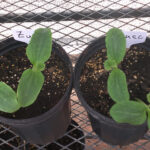
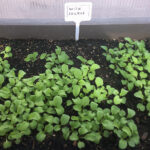

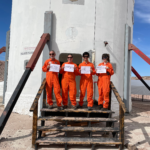
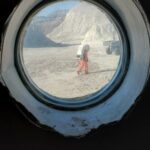

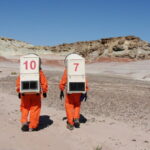
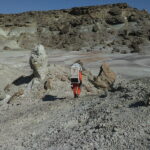
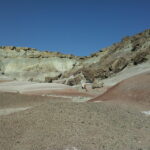
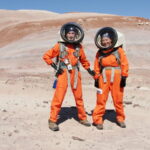
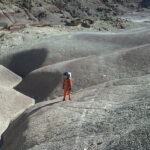
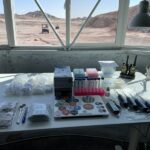
You must be logged in to post a comment.